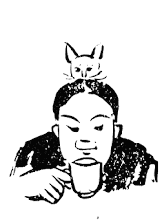Piaget’s Empirical Science
Jean Piaget, The Construction of Reality in the Child (New York: Basic Books, 1954).
Observation and experimentation combined seem to show that object concept, far from being innate or given ready-made in experience, is constructed little by little. Six stages can be discerned, corresponding to those of intellectual development in general. During the first two stages (those of reflexes and the earliest habits), the infantile universe is formed of pictures that can be recognized but that have no substantial permanence or spatial organization. During the third stage (secondary circular reactions), a beginning of permanence is conferred on things by prolongation of the movements of accommodation (grasping, etc.) but no systematic search for absent objects is yet observable. During the fourth stage (“application of known means to new situations”) there is searching for objects that have disappeared but no regard for their displacements. During a fifth stage (about 12 to 18 months old) the object is constituted to the extent that it is permanent individual substance and inserted in the groups of displacements, but the child still cannot take account of changes of position brought about outside the field of direct perception. In a sixth stage (beginning at the age of 16 to 18 months) there is an image of absent objects and their displacements. (4)
(Example of Piaget’s Method)
OBS. 40. At 0;10 (18) Jacqueline is seated on a mattress without anything to disturb or distract her (no coverlets, etc.). I take her parrot from her hands and hide it twice in succession under the mattress, on her left, in A. Both times Jacqueline looks for the object immediately and grabs it. Then I take it from her hands and move it very slowly before her eyes to the corresponding place on her right, under the mattress, in B. Jacqueline watches this movement very attentively, but at the moment when the parrot disappears in B she turns to her left and looks where it was before, in A.
During the next four attempts I hide the parrot in B every time without having first placed it in A. every time Jacqueline watches me attentively. Nevertheless each time she immediately tries to rediscover the object in A; she turns the mattress over and examines it conscientiously. During the last two attempts, however, the search tapers off.
Sixth attempt: She no longer searches.
From the end of the eleventh month the reactions are no longer as simple and become of the type we call “residual.” (51)


没有评论:
发表评论